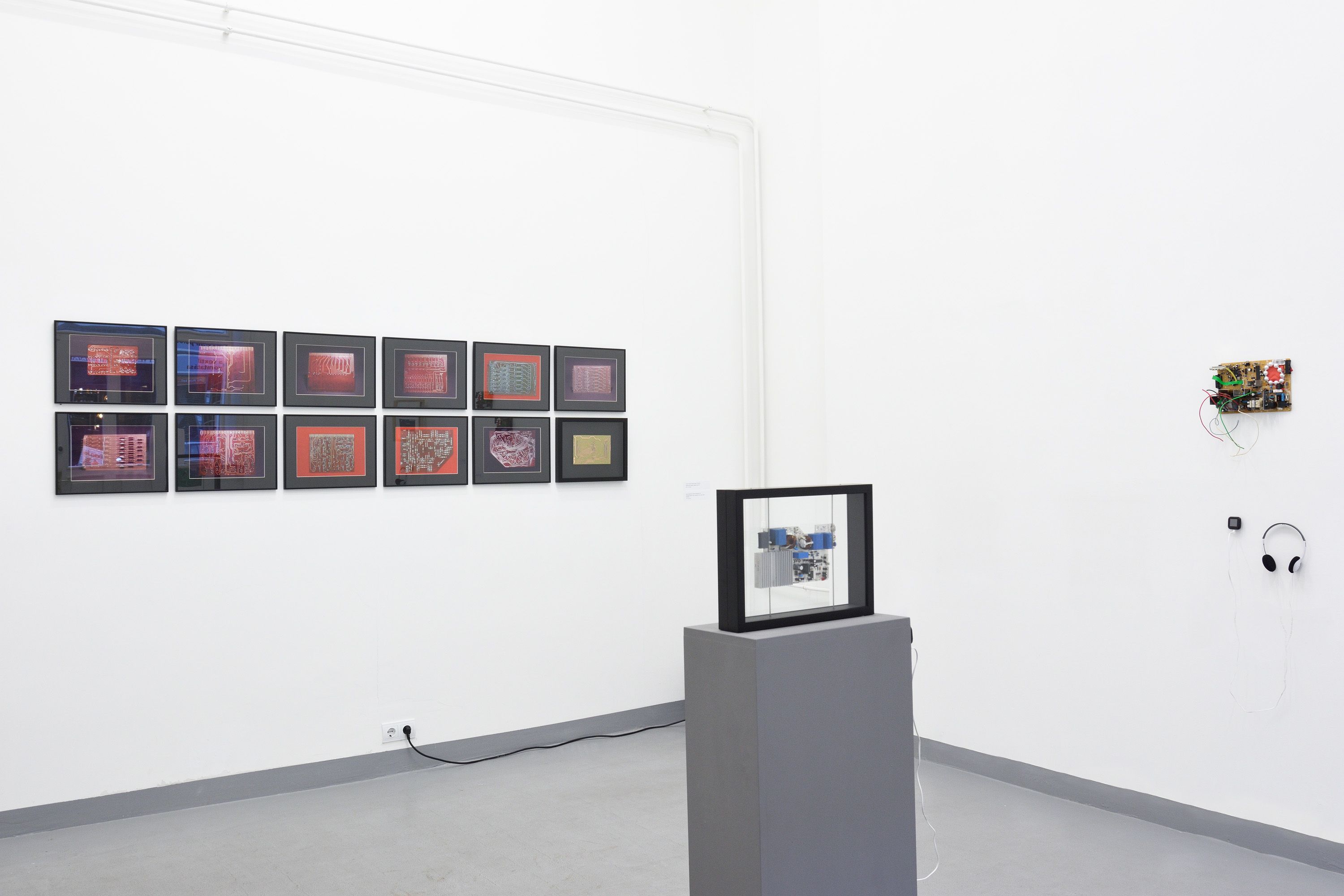Katalin Ladik
Genesis. Works from the documenta 14 in Athens
| Venue: | acb NA |
| Date: | Sep 29 – Nov 10, 2017 |
Description
The latest exhibition of Katalin Ladik showcases works recently presented at documenta 14 in Athens at the National Museum of Contemporary Art (EMST). The gelatine silver prints enlarged for this occasion were made from the original slide positives dated 1975, for which Katalin Ladik used printed circuits serving as musical scores. The conceptual background of the works was governed by the realization that throughout the 20th century we witnessed how communications systems got outdated in especially rapid succession. Each new stage of technological evolution entailed the end of a previous era, and each stage had left behind objects that seemed archaic. In the present case, printed circuits of fascinating visual representation, which, having lost their former functionality, are transposed into visual poetry via Ladik’s poetically performative approach. Ladik has arranged photographic reproductions of these ready-made objects into a series of eleven pieces, turning them into the visual basis of a gradually complexifying musical sound. The minimalism of the first pieces is expanded with new notes from piece to piece, as a result of which the audience can engage in an organically developing, gradually enriched work of musical process art. The series – along with this stage of technological evolution – is concluded by a visual poem entitled Golden Apocalypse.
Further developing the visuality of the printed circuits in Genesis, Katalin Ladik has created new musical objects by intervening into their original structure using the traditional technique of embroidery. The technical coldness and precision of printed circuits, the result of delicate engineering is augmented with the subjective effects of intervention by the human hand. Curiously, this artisanal intervention does not contradict the original technical character of the object: instead of polarizing a conflict, they appear as a sort of correction on the nature of the original structure that seems perfect as it is. Katalin Ladik is intrigued by the validity of these minuscule changes, amendments, other qualities and their representation in a given civilizational condition. Also used as musical scores, these objects are humanized by the traces and glitches left by the creative subject and abstracted from the aesthetic of industrial technology. The public can now hear and see these works for the first time at an exhibition.
Katalin Ladik is an internationally acclaimed poet, sound poet and performer, active since the’60s. Her career began in Novi Sad in the former Yugoslavia and she has been living and working in Hungary since the early ‘90s. Her activity has been awarded by international prizes in recent years (LennonOno Grant for Peace 2016), and she introduced her art in Athens this year as an exhibitor at documenta 14 in Athens and Kassel.


